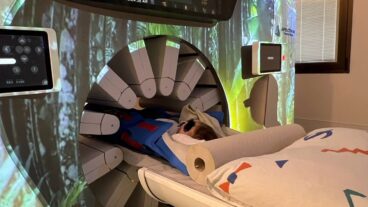The more scientists learn about the mechanism that links the brain and behavior and the bones – the better insight they’ll have to develop therapeutic procedure which will prevent and treat bone loss.Medical researchers have long known there’s a link between depression and lowered bone density, an ailment that can lead to osteoporosis and fractures.
An estimated 10 million Americans over the age of 50 years old suffer from osteoporosis and a further 32.9 million have low bone mass, placing them at an increased risk for developing this condition. But now an Israeli research team has clinically proven that depression actually weakens the bones. The findings may help in the fight against osteoporosis.
Loss of bone mass is the leading cause of osteoporosis and bone fractures among the aged in general and among post-menopausal women in particular. Several studies indicate that people with major depression generally have a lower bone mass density compared to control samples; however, no direct link between these two conditions has been established.
The Hebrew University team led by Prof. Raz Yirmia of HU’s Brain and Behavior Laboratory, Prof. Itai Bab from the Bone Laboratory, and Prof. Esther Shohami from the Brain Trauma Laboratory, say their findings constitute a significant step forward in understanding the interaction between the mind and the skeletal system. Based on their findings, published in the American journal PNAS (Proceedings of the National Academy of Sciences), the researchers have already been able to demonstrate the efficacy of anti-depressant drugs in preventing bone mass loss.
“It’s been known for some time that there’s a relationship between depression and bone loss, such that women in particular who suffer from depression have lower bone density, and therefore a greater risk of osteoporosis. And likewise, women with osteoporosis have been known to have greater levels of depression,” Yirmia told ISRAEL21c.
“Our objective was to find to find out whether depression can cause bone loss, and to elucidate the mechanism that links between depression and the bones.”
In order to examine the connection between depression and bone mass loss, the researchers used a model involving laboratory mice and an induced animal mode of depression called chronic mild stress (CMS), which is used in depression research quite often to locate the mechanism of depression and its appropriate therapy.
“[The drug] induces a depression-like condition in rodents – in our case mice – and as a result, the mice lose their interest in pleasurable activities, as well as social interaction,” explained Yirmiya.
After four weeks in a depressed state, Yirmiya’s monitors indicated that the mice showed a dramatic bone mass loss, including in the hip bone and vertebrae. This loss was caused by impairment in the bone renewal process, which is essential to maintaining normal bone density.
“We were also able to identify the cells within the bone which were affected,” explained Yirmiya. “It’s a specific type of bone cell – called osteoblasts – which is responsible for both new bone formation and also for maintenance of healthy functioning bones. If these cells aren’t functioning properly – the whole bone mass is reduced, and there’s less regeneration to the bone which is a necessary process of maintenance.”
Once the team verified the induced depression and bone density loss in the mice, they set about reversing the situation by blocking the degeneration with an antidepressant drug called tofranil, which not only blocked the depressive-like behavior symptoms but also the decrease shown in the bone mass.
“So we were left with the question – what is the mechanism that mediates the effect of depression in the bones?” said Yirmiya.
The team examined several candidates like hormonal mechanisms which link between the brain and many body organs, but at first didn’t find the process connecting depression to the skeletal structure. But Yirmiya explained that after many attempts, they found the key – that depression sets off a neural system connecting the brain to the internal organs, including the skeleton.
“We saw that in the depressed mice, this system was activated causing the release of a compound into the bones called noradrenaline, which has a detrimental effect on the bone-building cells. In the chronically depressed mice, the level of the compound was highly elevated,” said Yirmiya.
The researchers were able to show that chronic treatment with a drug – that blocks noradrenaline in the bone also blocks the detrimental influence of depression on the bone.
“So ultimately, we have good evidence that depression activates the sympathetic nervous system which in turn produces bone loss. It’s the first time anyone has made the connection between behavior of the nervous system and the bones,” said Yirmiya, who has a PhD in Neuroscience from UCLA where he studied from 1984-88. Since returning to Israel, he’s been a professor of psychobiology at Hebrew University for 13 years in the department of psychology.
“In fact in the paper we wrote on the study, we proposed that this constitutes evidence and the basis for a new scientific field – neuro psycho-osteology – a field which will connect brain behavior and the bones.”
According to Yirmiya, scientists now need to learn more about the mechanism that links the brain and behavior and the bones – the more they know about the mechanisms, the better insight they’ll have to develop therapeutic procedure which will prevent and treat bone loss.
The Hebrew University’s technology transfer company, Yissum, has applied for a patent for treatment of osteoporosis through anti-depressants.
Yirmiya’s studies have convinced beyond doubt that the mind plays an important factor is its affect on the body.
“There’s absolutely a connecting between the diseases of the body and the mind. The body and mind are always interacting, they constitute an integrative system. We know that when the mind is excited, it can alter a person’s heart rate. Now we also know the mind can alter bone density and cause osteoperosis.”












